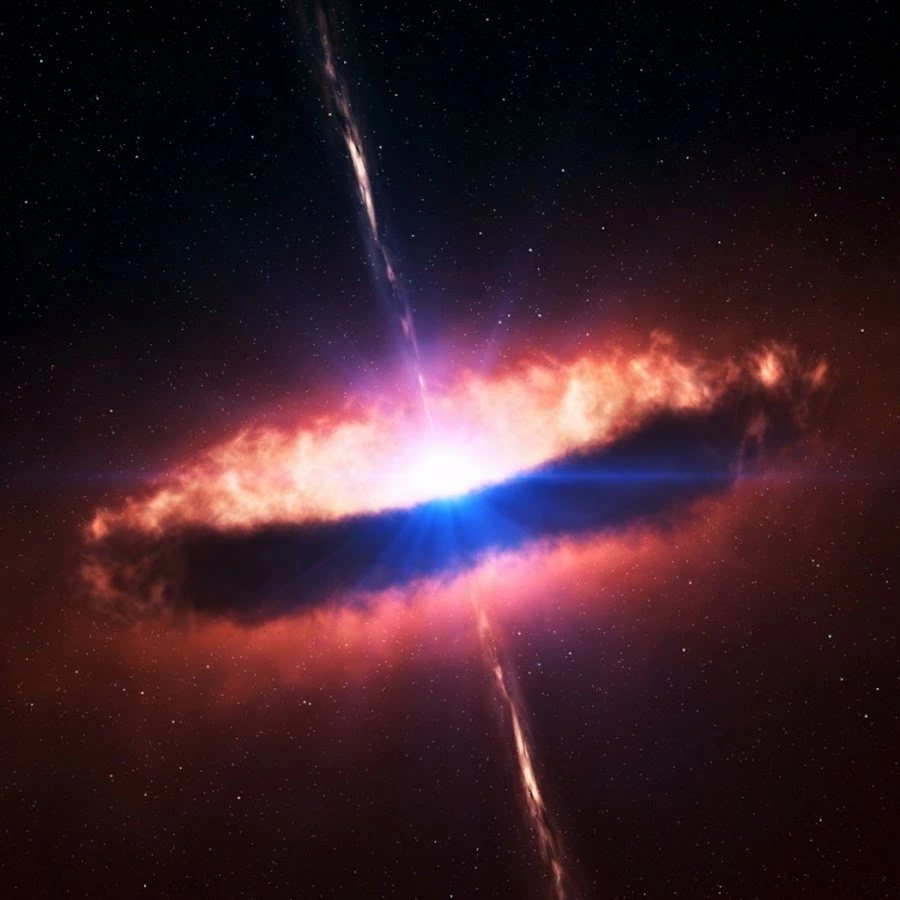I’ve been doing a bit of searching for theories on the origin of baryon matter (including antimatter of course) and some seem to hint at quantum particles spawning from the fabric of space (but doesn’t seem to theorize on how this happened) but not many focus on hypothesizing how all forms of baryon matter ether: was the default starting point (that is empty space wasn’t the default origin, energy was) or that the fabric of space is the origin of baryon matter (something like: space has the blue print and energy supplies the material).
Thanks for any insight/links that focus on this question
Wanted to see this since a long time ! Do you have a source ? Please ?
Unless maybe you are talking about this :
Zero-point energyThis link was amazing. Thank you so much and it seems I need to dive deeper into quantum mechanics.
This was honestly the answer I was after. Have you read about Black Hole cosmology? I’m not certain how probable it is to be true, but it’s extremely interesting and along with Roger Penrose’s own eon theory, it seems likely that the universe is cyclical.
I haven’t read Roger Penrose’s theory yet, but a lot of my intuition is pointing to something like a cyclic big bang (akin to a universe of energy being released from a back hole-like origin) before eventually evolving into a big crush and repeating the cycle. I need to read Roger Penrose’s theory to compare it to my intuition. 
But quantum mechanics seem to have the answers on how antimatter/baryon matter is formed through the relationship of fields and quanta energy vibrations.
Thanks again for the link.
You are talking about Penrose now and it is a nice coincidence that I wrote about him yesterday here :
https://lemmy.ca/post/3363583I though I saw your avatar before and we have indeed crossed paths before and seem to be on the same cosmological discovery. You seem very pragmatic in your comments. How has your research on a non-big bang origin developing? Seems I have some catching up to do on Penrose - what are your initial thoughts?
Yes we had a nice exchange five or six days ago in your post :
Beyond the Darkness - Dark Matter: A Baseless Hypothesis?
I am not a physicist and I don’t work in this field. I just read since many years and I made my mind about what was going to be successful and what was not.My best prediction so far was that JWST was going to see the same type of galaxies very far away as those in the local universe. (at least partially verified) I made that same prediction when Hubble telescope was put into orbit. Back then physicist started doubting their theories.
I was most impressed by a single fact of physics ...
…that all energy in ordinary matter is equal to the negative potential gravitational energy of that matter. Because of this I am scanning all I read for clues for a mechanism where matter could be created from gravitational field …something like Hawking radiation. For the same reason I am also looking for evidence that the universe could stand for a much longer time since the CMB. This would be the case for a universe that would be exponentially expanding. Suppose the accelerating rate of expansion double each 10 billion years or so. Then, if you go in the past every 10 billion years the rate of expansion is smaller and smaller exponentially decreasing and the universe is extremely old.
I have so many more ideas but I don’t want to make a wall of text.
Observably and experimentally, it’s so hard to test powerful gravity fields. But theoretically, if we could confine and increase a portion of matter into a far more dense state, we should be able to create increased gravity - I think that’s possible, but it would take insane energy and you’d have to control it to a point that it doesn’t turn into a giant explosion; seems very probable and should be conducted in space…just to be safe.
But, is your thinking that if we have a net zero energy universe, it should not have a big bang, or just that a net zero may have originated differently from a big bang? I’m just curious.
if we find a mechanism that continually creates matter in the universe we don’t need a big bang. Creation of matter and gravity fields, (net zero) could somehow increase the expansion of the universe. 3d interference pattern of gravitational waves would create
rogue wavesat specific points in SpaceTime that would create matter and the CMB.
Oops ! I just defined a new cosmological model 😄 !I might be missing something, but how would this new model reproduce the CMB? The cosmic microwave background is a black body spectrum with an extremely uniform temperature in all directions. The localized fluctuations in temperature are only a very small shift to the average.
Interesting idea. And the so-called “Dark Energy” also results from the rogue waves or perhaps another process?
Please follow developments here :
https://lemmy.ca/post/3539374
https://lemmy.ca/post/3553583I had to rebuild completely my post (questions and answer) from other users also, because some moderator, at “ShowerThoughts”, deleted the post while it was in progress.
shower thoughts at lemmy.world, so :
I wish that science channels would stop using the term “fabric of space” because the term is meaningless (or not well defined). What is probably meant when “fabric of space” is mentioned, is the abstract geometrical concept of manifold: https://en.wikipedia.org/wiki/Manifold
So what we are talking about are coordinates and distances between those coordinates. And I’d consider it unlikely that coordinates and their relations could spawn matter by themselves.
Edit: another commenter linked me to zero point energy, and with its relating links, that seems to give me the answers I was after. 
I was trying not to write too much but I guess it’s hard to ask without more context.
I’ve been reading about how antimatter results from particle accelerators and high energy collisions in space. But in layman terms, when these high energy collisions occur, are we simply allowing released energy to form into antimatter?
My understand is when electrons and protons have extreme collisions or forced too close within extreme gravity, they form neutrons or other particles (including photons). These are examples of matter into energy into matter. But are the “blueprints” that tell energy how to form into baryon matter in the energy (that is, does quantity and/or power cause the resulting state), the strong/weak fields influencing it, or some other mechanism?
I’ll try to address your questions in reverse. For the second question, the formation and structure of hadronic particles such as baryons or mesons is dictated by the fundamental forces. Specifically, the weak, strong and electromagnetic interactions between the quarks that make up the hadron. Gravity is too weak to play a role on this scale.
It’s important to remember that protons and neutrons aren’t elementary particles, they’re composed of quarks. A particle composed of 2 up quarks and a down quark in its lowest energy state is a proton. 2 downs and an up in the lowest energy state is a neutron. Elementary particles such as quarks are identical to other quarks of the same type - every up quark could be swapped for another up quark with no effect on the system. So a proton, composed of quarks in a specific energy state, will be indistinguishable from another proton. There doesn’t need to be a blueprint somewhere to define a “proton”, it just emerges naturally from the fundamental forces and elementary particles.
For an example on a more familiar scale, consider chemical reactions. By making or breaking atomic and molecular bonds you can have an oxidation reaction like fire, or generate electricity in a battery, change the color of a substance, etc. All of those distinct emergent reactions are governed by the electrons in atoms, whose energy levels and interactions emerge from quantum electromagnetism.
These forces also dictate how the composite particles can be reorganized, for example allowing a decay to occur. A free neutron will eventually undergo beta decay into a proton, an electron, and an anti-electron neutrino. This is allowed because the mass of the proton and electron (and neutrino, though it’s mass is currently unknown and experimentally consistent with 0 for this case) is less than that of the neutron. So the beta decay produces a lower energy state. The Feynman diagram for the leading order term in the decay mechanism describes it as being mediated by a W- boson.
This segues into your first question. It sounds like you’re thinking of high energy colliders like the LCH, where beams of protons or even lead nuclei are collided at high energy. These collisions produce a quark gluon plasma where quarks are no longer confined by color charge. It’s basically a superfluid soup of quarks and gluons. As it expands and cools, quarks become color confined again and consolidate into composite particles (hadrons), including some exotic and very unstable ones that quickly decay into more stable configurations. Some of these initial hadrons or their decay products will be formed from antimatter quarks. However, any reaction mechanism that creates or destroys antimatter will create or destroy the same amount of matter. This statement ignores CP violation, which is a small effect in this case, though essential for creating the matter dominated universe we live in.
The strong force between quarks is so strong that the energy needed to “separate” the quarks exceeds the energy needed to produce a quark-antiquark pair. This mechanism converts energy into matter, but the only “blueprint” is “minimize the energy of the system”, and creating a pair of quarks to stick to the initial pair that’s being pulled apart achieves this.
I think particles are just excitations in different quantum fields. Maybe you can think of the fields as the “fabric” but that’s probably not right.
Definitely check out pbsspacetime on YouTube for a good high level overview and great visuals. Probably anything related to quantum field theory.
That’s a great YouTube channel. I’ve been checking out the wiki on zero point energy and with all the associated links, that seems to have the answers I’m looking for. Thank you. 




